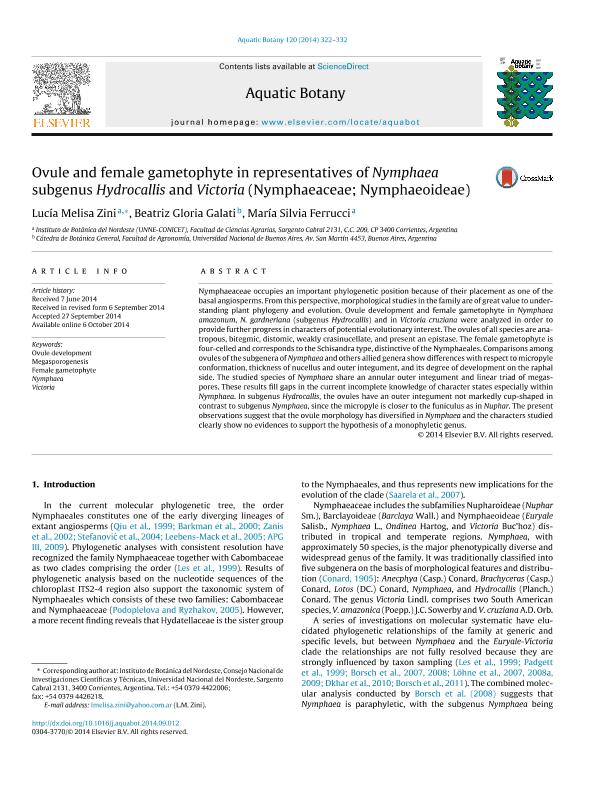Artículo
Ovule and female gametophyte in representatives of Nymphaea subgenus Hydrocallis and Victoria (Nymphaeaceae; Nymphaeoideae)
Fecha de publicación:
10/2015
Editorial:
Elsevier Science
Revista:
Aquatic Botany
ISSN:
0304-3770
Idioma:
Inglés
Tipo de recurso:
Artículo publicado
Clasificación temática:
Resumen
Nymphaeaceae occupies an important phylogenetic position because of their placement as one of the basal angiosperms. From this perspective, morphological studies in the family are of great value to understanding plant phylogeny and evolution. Ovule development and female gametophyte in Nymphaea amazonum, N. gardneriana (subgenus Hydrocallis) and in Victoria cruziana were analyzed in order to provide further progress in characters of potential evolutionary interest. The ovules of all species are anatropous, bitegmic, distomic, weakly crasinucellate, and present an epistase. The female gametophyte is four-celled and corresponds to the Schisandra type, distinctive of the Nymphaeales. Comparisons among ovules of the subgenera of Nymphaea and others allied genera show differences with respect to micropyle conformation, thickness of nucellus and outer integument, and its degree of development on the raphal side. The studied species of Nymphaea share an annular outer integument and linear triad of megaspores. These results fill gaps in the current incomplete knowledge of character states especially within Nymphaea. In subgenus Hydrocallis, the ovules have an outer integument not markedly cup-shaped in contrast to subgenus Nymphaea, since the micropyle is closer to the funiculus as in Nuphar. The present observations suggest that the ovule morphology has diversified in Nymphaea and the characters studied clearly show no evidences to support the hypothesis of a monophyletic genus.
Palabras clave:
Ovule Development
,
Megasporogenesis
,
Female Gametophyte
,
Nymphaea
,
Victoria
Archivos asociados
Licencia
Identificadores
Colecciones
Articulos(IBONE)
Articulos de INST.DE BOTANICA DEL NORDESTE (I)
Articulos de INST.DE BOTANICA DEL NORDESTE (I)
Citación
Zini, Lucia Melisa; Galati, Beatriz Gloria; Ferrucci, María Silvia; Ovule and female gametophyte in representatives of Nymphaea subgenus Hydrocallis and Victoria (Nymphaeaceae; Nymphaeoideae); Elsevier Science; Aquatic Botany; 120; Part B; 10-2015; 322-332
Compartir
Altmétricas




